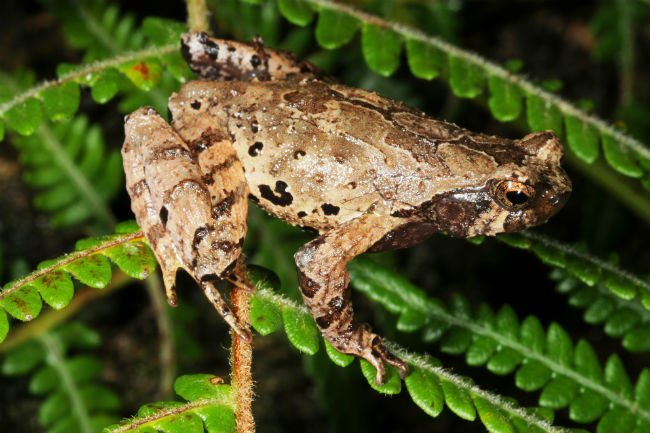
Vietnam contributed 58 out of 157 new species discovered in the Greater Mekong region in 2017, according to the New Species on the Block report announced by the World Wildlife Fund (WWF) on December 12.
 |
| This tiny toad is one of the many new species discovered in 2017. |
Vietnam contributed 58 out of 157 new species discovered in the Greater Mekong region in 2017, according to the New Species on the Block report announced by the World Wildlife Fund (WWF) on December 12.
The report lists three mammal, 23 fish, 14 amphibian, 26 reptile and 91 plant species discovered in Cambodia, Laos, Myanmar, Thailand and Vietnam by scientists who ventured into the region’s jungles, mountains, rivers and grasslands, often in harsh conditions.
The 157 species discovered in 2017 means that three new species were discovered a week on average in the region. Thirty-nine species were discovered in Myanmar, a good sign that the opening of the country to field research and conservation will yield many more species in the future. Vietnam had 58 new species, Thailand 35, Laos 24 and Cambodia eight.
The new species include a tiny toad with sharp horns, discovered in a foggy, mountainous, moss covered elfin forest in Vietnam; a bamboo species from Cambodia’s Cardamom Mountains with a unique bulb-shaped base that grows along roadsides, making it vulnerable to clearings; a newly discovered Thismia herb species from Laos that is already endangered due to its habitat being leased out for limestone mining; and a pancake-shaped catfish that was found in fast flowing cold water in Myanmar’s remote Hponkan Razi Wildlife Sanctuary among others.
“There are many more species out there waiting to be discovered and tragically, many more that will be lost before that happens,” said Stuart Chapman, WWF’s Asia-Pacific Regional Director for Conservation Impact. “It doesn’t have to be this way. Ensuring that large reserves are designated for wildlife, along with increased efforts to close illegal wildlife trade markets, will go a long way to conserving the extraordinary wildlife diversity in the Mekong region.”
According to WWF’s most recent Living Planet report, there has been a 60% decline in population size of the world’s wildlife in the last 40 years. In the Greater Mekong region, the decline is probably much worse given the large-scale destruction of wild habitats and the industrial-scale poaching in many parts of the region.
In Vietnam, a battle is going on to save rare species from hunter’s snares, which are laid out in the forests to catch unsuspecting wildlife. The extent and impact of this threat is now becoming known internationally, and organizations like WWF are working with local authorities to mobilize rangers and local communities in an attempt to clear the forest floors of illegal traps and raise awareness about the impacts that wildlife consumption is having on the country’s precious and rare wildlife.
"There is blood, sweat and tears behind every new discovery,” said Chapman. “But it’s a race against time to announce a new discovery so steps can be taken to protect it before it’s too late.”
(Source: SGT)





